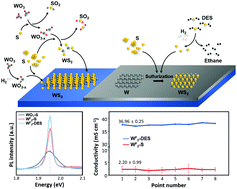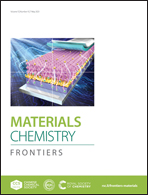Highly electroconductive and uniform WS2 film growth by sulfurization of W film using diethyl sulfide
Abstract
The reduction of intrinsic defects, including vacancies and grain boundaries, remains one of the greatest challenges to produce high-performance transition metal dichalcogenides (TMDCs) electronic systems. A deeper comprehension of the underlying reaction mechanisms is also needed. In this work, we present a new sulfurization process of tungsten (W) film using a sulfur (S)-containing organic precursor for the growth of WS2 films on SiO2/Si substrates. The W film was deposited with precise layer thickness control by atomic layer deposition and uniformly sulfurized using diethyl sulfide (DES) as S precursor. Comprehensive optical and chemical analyses revealed that by using DES as S precursor, the S atoms were uniformly supplied, and sulfurization occurred accurately and delicately. Moreover, the WS2 film synthesized using DES showed outstanding electrical conductivity (∼37 mS cm−1), which was almost 17 times higher than that of the WS2 film synthesized using S powder. Based on the results of optical, electrical, and chemical analyses, we proposed and validated a hypothesis to explain the sulfurization mechanism. The fabricated TMDC materials using the method presented in this work show great potential for industrial application due to their highly uniform surface and improved electrical conductivity.

- This article is part of the themed collection: Functional materials for sustainable future - Vision from Korean scientists


 Please wait while we load your content...
Please wait while we load your content...